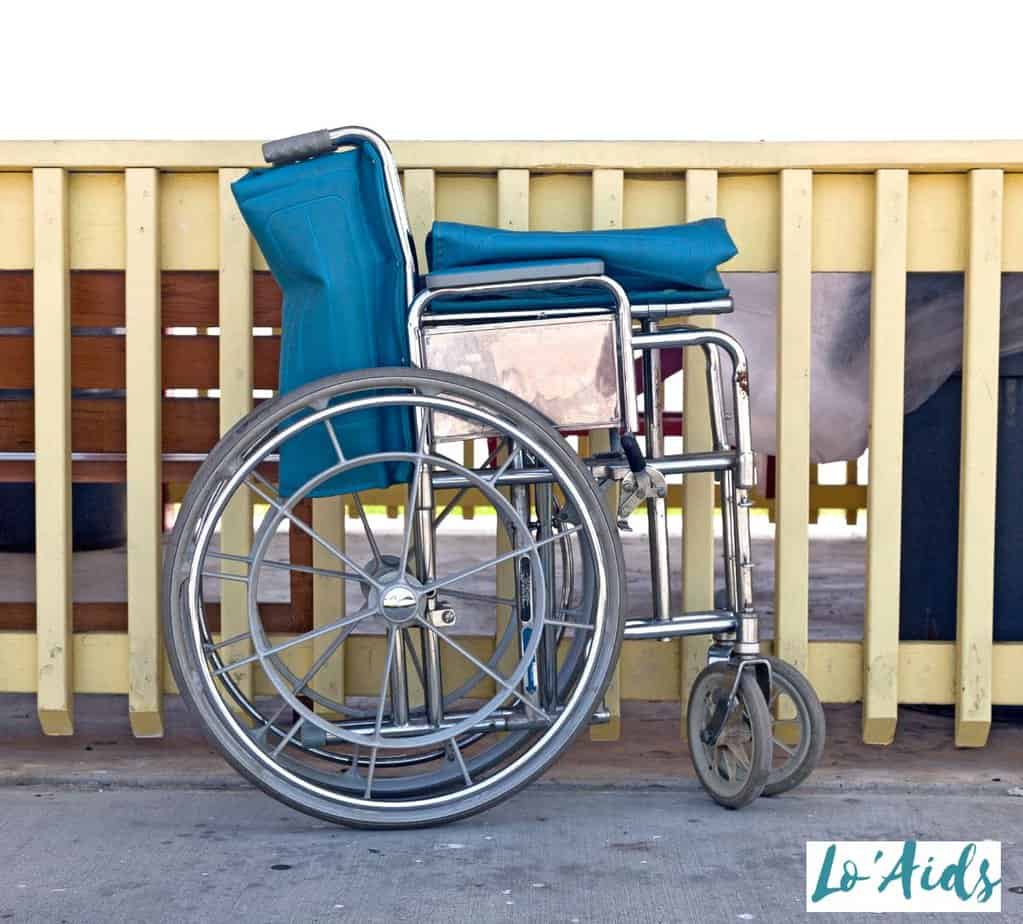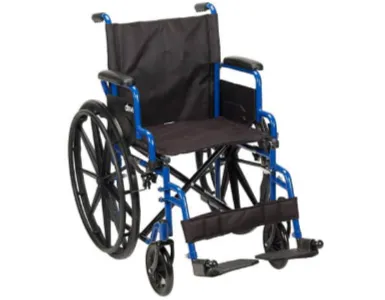Did you know the bariatric power wheelchair market is predicted to increase from $1.5 billion in 2015 to $2.4 billion in 2022, indicating expanding bariatric need? (1)
If you weren’t yet aware, bariatric wheelchairs are a category of wheelchairs designed for heavier users.
These comfortable devices are meant to add features to standard wheelchairs, which begs the question – what is the width of bariatric wheelchairs?
Table of Contents
Key Takeaways:
- Most bariatric wheelchairs can go up to 39 inches in width.
- Lightweight wheelchairs tend to be up to 28 inches wide.
- Bariatric wheelchairs also accommodate more weight and height.
The Width of Bariatric Wheelchairs
There are many product options for bariatric care that we will discuss later in this article as we look at the range of widths offered.
With all the options for the width of bariatric wheelchairs, the decision depends on the user.
You can pick a variety of seat widths from 18 to 39 inches, depending on what’s most comfortable.
Keep in mind that the height will also change with the width. For instance, a wheelchair that is 34″ wide will be 36″ tall. You can take a look at this guide. (2)
There are a few other measurements and adjustable features that will correspond to the width and height. These are:
- Length
- Open and closed width
- Seat width
- Adjustable seat length
- Adjustable seat height
- Seat depth
- Adjustable angles for the backrest and seat
- Adjustable footrests
- Vinyl upholstery
- Nylon upholstery
- Removable armrests
- Carbon steel frames
- Gusseted side frame
- Triple chrome-coated steel frame
- Reinforced side frames
- Adjustable elevated leg rest
These are the features to consider, in addition to the width, when you purchase a bariatric wheelchair.
You should also look for a portable wheelchair, so it’s not difficult to deposit in the trunk of your car or even on public transportation when you travel.
I would recommend you look into options other than manual wheelchairs. Some electric wheelchairs offer features like smoother and more accessible mobility.
If you’re wondering about the width of wheelchairs, you should consider the weight capacity, too.
Here’s a video on a heavy-duty model you should consider looking at as you read:
The Weight Capacity of Bariatric Wheelchairs
Weight capacity is an important consideration for all bariatric patients, providers, and manufacturers.
These wheelchairs with wider seats are designed to provide a comfortable wheelchair experience for users with heavier bodies.

They carry larger weights as compared to stand wheelchairs.
Regular wheelchairs carry 250-300 lbs., whereas bariatric wheelchairs are heavy-duty wheelchairs that can carry from 500-700 lbs.
Heavy-duty, extra-wide wheelchairs are the best bariatric wheelchair option for larger users, allowing them the comfort and dignity of safe mobility.
Since standard-featured wheelchairs aren’t meant to carry much weight, bariatric chairs have additional features that make them anti-tippers.
This term means the wheelchair will remain safe no matter how heavy you are, preventing you from falling off and injuring yourself.
I know this will contribute to your peace of mind, mainly because many healthcare services and providers don’t typically invest in care for larger patients.
In fact, longitudinal research displays heart-wrenching data about healthcare providers displaying varying levels of fatphobia.
This sort of discrimination is widespread and has negative consequences on the health of larger patients.
This kind of stigma harms users more than their weight. Data shows an increased risk of eating disorders, diabetes, cardiovascular diseases, body dysmorphia, and early death in those who suffer discrimination because of body weight. (3)
Know that bariatric care is your right, and you are entitled to it from healthcare service providers and other facilities.
READ MORE: What Are the Different Wheelchairs Types?
Frequently Asked Questions
What is the difference between a bariatric wheelchair and a regular wheelchair?

Bariatric wheelchairs are made for heavier users. They carry more weight (up to 700 lbs) than regular wheelchairs (200-300 lbs).
They also have more adjustable features than regular wheelchairs, especially safety features.
How do you determine the width of a wheelchair?
You can measure the seat width from the widest parts of the user’s bottom, thighs, and hips.
You also need to remember that the wheelchair should cater to the user’s height, too.
What happens if a wheelchair is too wide?
It puts the user at risk of tipping to the side or collapsing. Users will experience discomfort when attempting to steer or sit up.
You can fix this by attaching more foam to the sides.
Conclusion
As I’ve previously mentioned, bariatric wheelchair users deserve the best comfort!
It is necessary to measure the width of bariatric wheelchairs to ensure a perfect fit for each individual.
I know my article and the information shared will help you find the perfect wheelchair, contributing to a more comfortable and fulfilling life.

If you use a bariatric wheelchair, let me know about your experiences in the comments below!
References
- 1. Bariatric Transport Wheelchairs Market [Internet]. Future Market Insights. [cited 2022 Nov 23]. Available from: https://www.futuremarketinsights.com/reports/bariatric-transport-wheelchairs-market#:~:text=In%20view%20of
- 2. Bariatric Wheelchair Range [Internet]. Specialized Orthotic Services. Available from: https://www.specialisedorthoticservices.co.uk/brochures/brochures/sos-bariatric-wheelchairs.pdf
- 3. Montgomery A. Addressing weight stigma and fatphobia in public health | School of Public Health | University of Illinois Chicago [Internet]. University of Illinois Chicago School of Public Health. Available from: https://publichealth.uic.edu/community-engagement/collaboratory-for-health-justice/addressing-weight-stigma-and-fatphobia-in-public-health/





